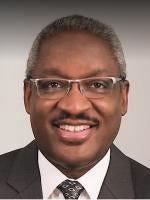With plans to reduce Biscayne Boulevard to fewer lanes to allow for the creation of a promenade and bicycle lanes in Downtown Miami, some are arguing that the need for public transportation options cannot be clearer.
The drivers in Miami-Dade are in desperate need of public transportation options that will reduce commute times, improve quality of life issues, and support economic development growth. The recurring gridlock that even visitors (such as those who are in town during Art Basel) have to expect, could be an essential element in allowing Miami-Dade to be able to sell the idea of public private partnerships (“P3″) for transportation projects to private investors.
The frustrations created by the congestion that Miami’s heavy traffic causes can be converted into the cash flow stream that is key to a successful P3 and that would allow the local government to successfully “sell” the idea to the private sector. The opportunity currently exists to recapitalize Miami’s infrastructure using a P3 that offers expanded options for mass transit and incorporates modern design and innovative operational techniques. Miami has one-of-a kind potential to attract investment. Given the alternative, Miami residents and visitors may elect to forgo their cars and provide the strong ridership that investors will consider when judging the ability of a mass transit P3 to generate stable and predictable revenues.
A P3 is different from traditional government contracts and procurement methods because it involves more stakeholders and is characterized by a secure, long-term revenue stream. An indispensable requirement for private investment is the ability to earn a level of return that adequately compensates for the level of risk. This is what determines the bankability of the project and whether it is financially desirable. The costs and revenues of a P3 affect the expenses, proportions of the capital that are debt versus equity, and the interest rates and repayment periods of the financing. Each of these factors can be adjusted to appropriately spread the risk among the private and public sector, but a major determining factor is whether the asset will generate enough money to pay back the debt.
With an increase in Miami’s population, growth will be seen in the number of businesses, events, outdoor activities, attractions, and the amount of traffic. As we have stated before, transit-oriented development is critical to metropolitan growth. Under these circumstances, the long-term, stable cash flow that is needed for the structuring and financing of a P3 could prove to be more easily attained in Miami than previously estimated. As Miami-Dade continues to develop its urban core and increase connectivity between different neighborhoods and with Broward County, it is becoming more ripe for a bankable transportation P3 that will have sufficient cash flow to cover its expenses and the return requirements for its debt and equity investors.
With a record number of visitors last year and growing population of transplants, South Florida continues to be a destination that can bode well for investors who want assurances when appreciating the risks involved with P3s and guaranteeing a secure revenue stream. As explained in Executive South Florida Magazine, the government acting alone cannot move fast enough to keep pace with the population growth and the south Florida region “is not far from the day when commuters and other travelers will be afforded more meaningful choices for finding seamless paths to their destinations.” Now is an opportune time for the private sector to explore options for transportation-related P3s in South Florida.




 />i
/>i

